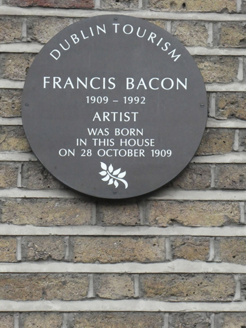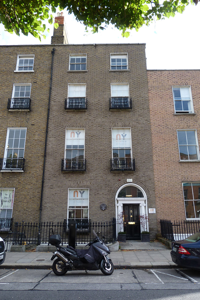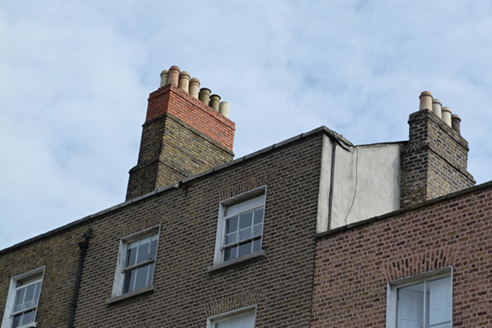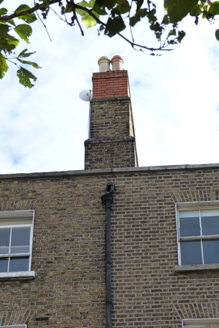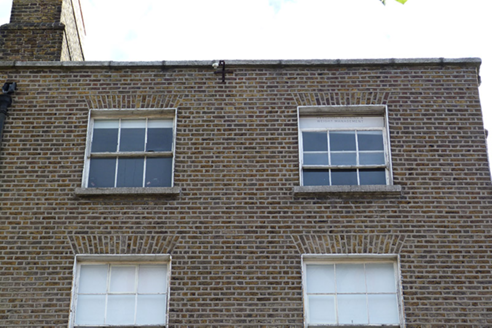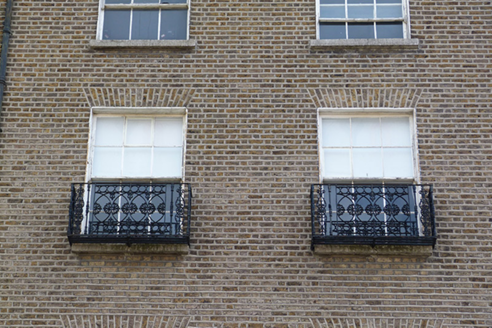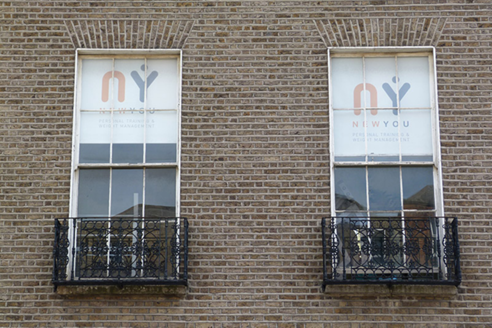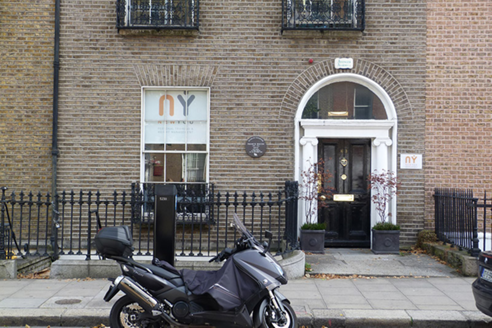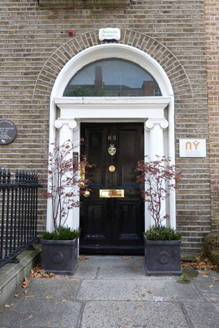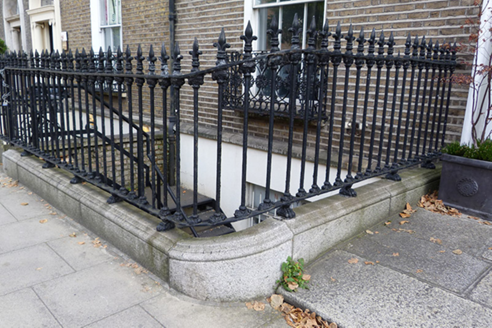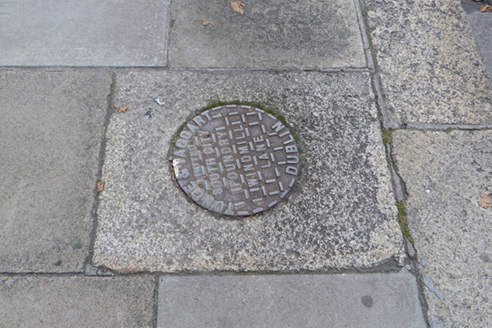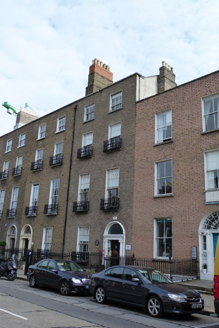Survey Data
Reg No
50100641
Rating
Regional
Categories of Special Interest
Architectural, Artistic, Historical
Original Use
House
In Use As
Office
Date
1840 - 1860
Coordinates
316841, 233110
Date Recorded
29/08/2016
Date Updated
--/--/--
Description
Attached two-bay four-storey former house over basement, built c. 1850 as one of pair with No. 62, having two-storey return to east end of rear. Now in use as offices. M-profile pitched roof, behind refaced brick parapet with granite coping, shouldered brick chimneystacks with clay pots, and with cast-iron rainwater goods to west. Flemish bond brown brick walls on granite plinth course over rendered basement walling; rendered walls to east elevation. Square-headed window openings, diminishing in height to upper floors, with raised rendered reveals and painted granite sills. Timber sliding sash windows, three-over-three pane to top floor, ten-over-ten pane to basement and six-over-six pane elsewhere. Decorative cast-iron balconettes to ground, first and second floors, and wrought-iron grille to basement. Round-headed doorcase with rendered surround, plain frieze and cornice, engaged Ionic columns, plain fanlight and four-panel timber door with brass furniture. Granite platform with curved cast-iron fleurs-de-lys-headed railings on moulded granite plinth enclosing basement area. Cast-iron gate and steel steps lead down to basement area. Cast-iron coal-hole cover set in granite flag to footpath. carparking and recent two-storey building and yard to rear of plot.
Appraisal
No. 63 Baggot Street Lower is a mid-nineteenth-century former house, forming part of a cohesive row on a street that has been well retained. It displays the well-balanced proportions and graded fenestration pattern typical of the period and is enriched with decorative iron balconettes to three storeys, and a Greek Revival doorcase executed in Portland limestone. The intact setting contributes to the character of the streetscape. No. 62 was offered for sale unfinished with the this site in 1849. (Casey, 2005) Development of Baggot Street began at the west end in the late eighteenth century, but was slow due to recession during the mid-1790s. The majority of houses were built during the early decades of the nineteenth century, but a number of plots were still being advertised during the early 1840s, by which time the street had developed into a thriving residential thoroughfare. There are many signs of speculative building across the architectural fabric of the street, including variation in levels, materials and detailing. No. 63 was the birthplace of the painter Francis Bacon (1909-1992).
